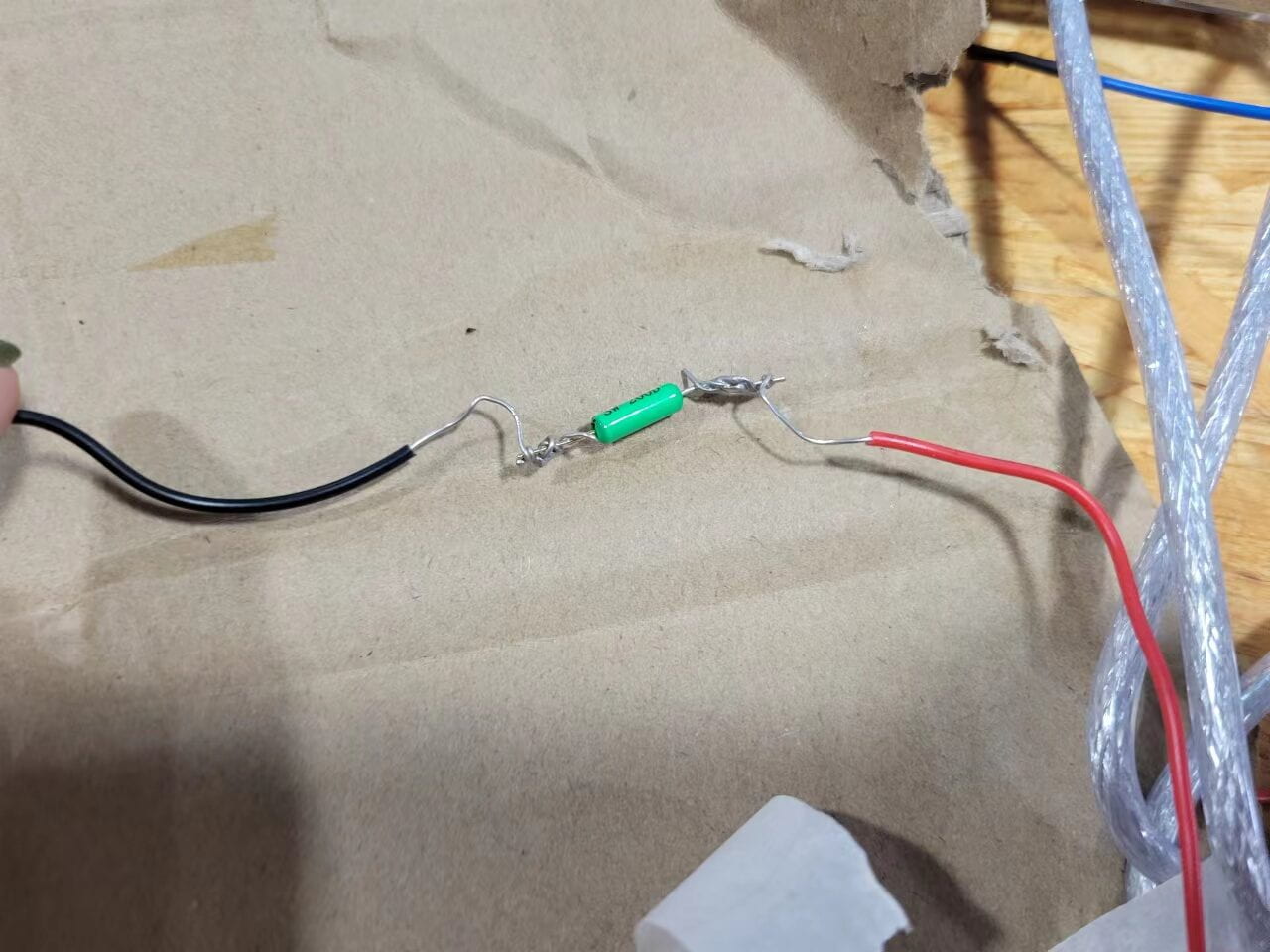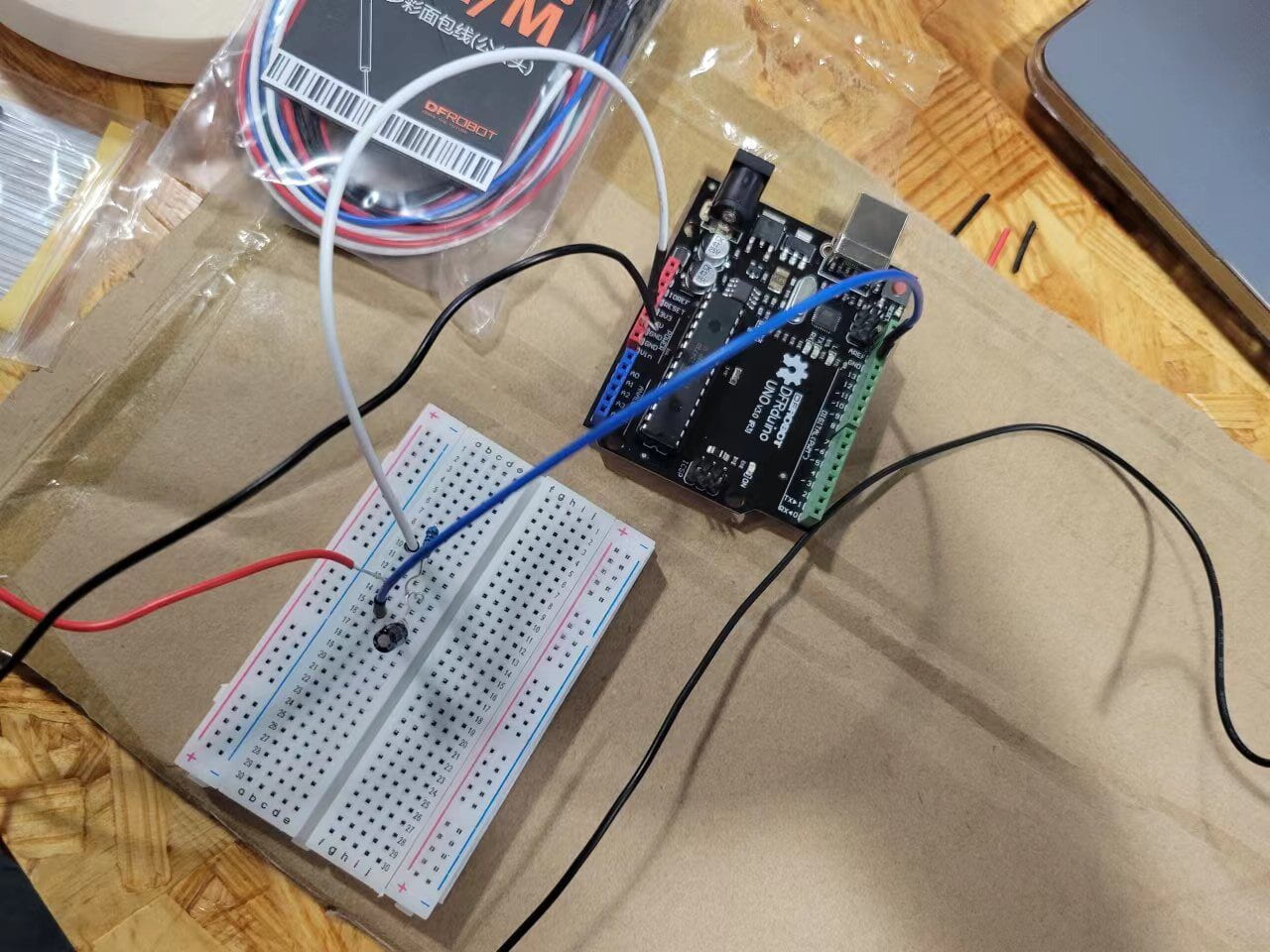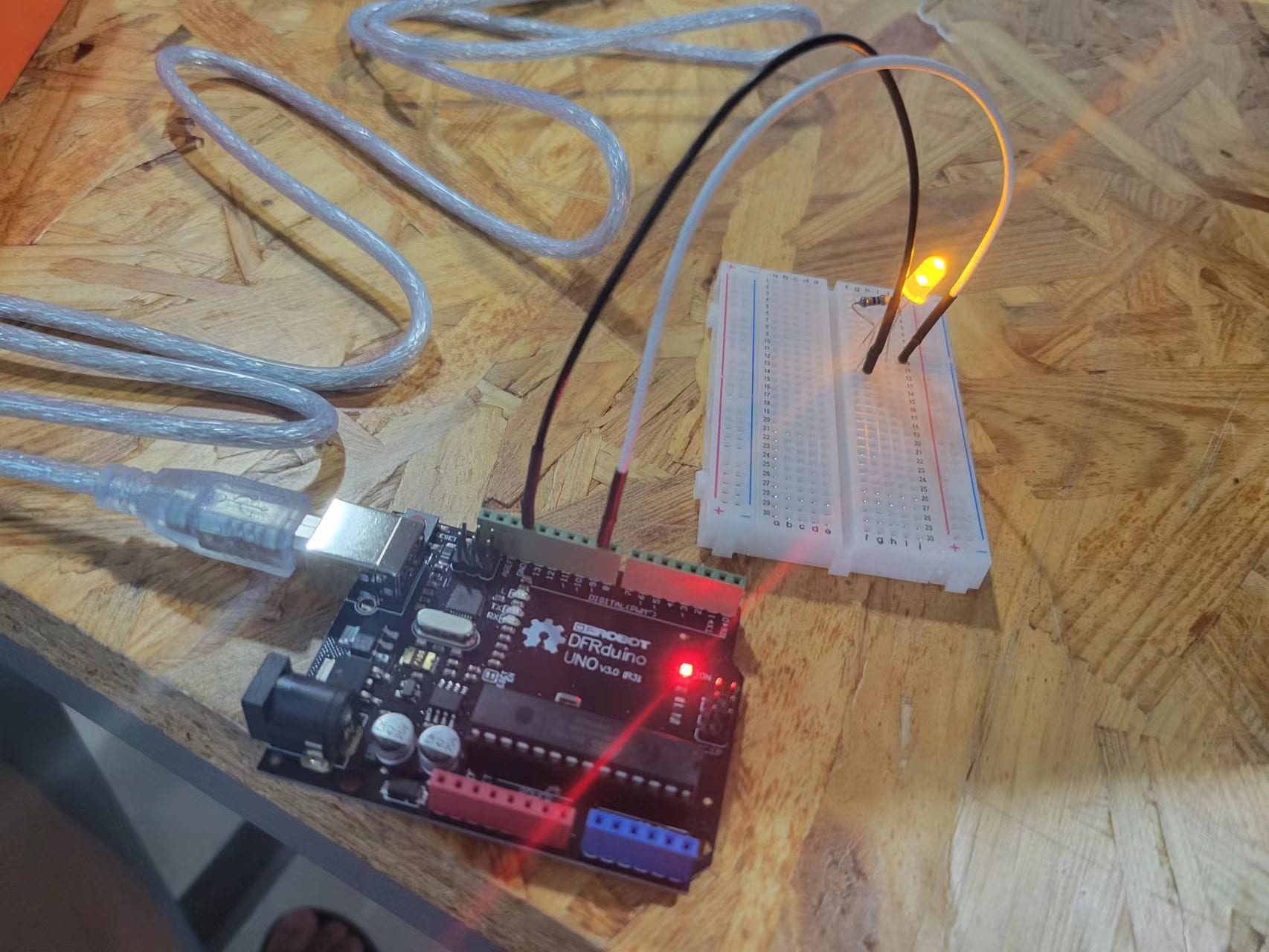First, our group exchanged our ideas on the three stories and shared our imaginative artefacts. After a discussion, we decided to work on Morgan’s idea:
…an interactive bed where patients lie down, and a holographic schematic of their bodies’ autonomy appears above them. It would also highlight where an infection may be centralized in the body and propose remedies for various illnesses based on the nature of the diagnosis.
This concept is derived from The Plague by Yang Leisheng, a world that is plagued by a nameless disease that turned people into stone. This device would function as an examination to decide whether a person is “stoned” or not, and upload this essential personal health information into a database controlled by the government. Since the original idea of a bed would be too much to accomplish with the limited materials, we decided to change it into a wearable armour-like device on the hand that functions the same. The design of this armour has many references to the armour in Ironman as well as Pip-boy in the Fallout series. I personally contribute to creating the prototype, revising the main storyline and fleshing out details of the plot.
In making the prototype, Morgan is our main designer as he found blueprints references for the cardboard main body, and we followed these blueprints to make according to cardboard parts. We then assembled these components using glue guns. For the screen that shows the scanning result of people, we decide to draw the whole setting by hand.
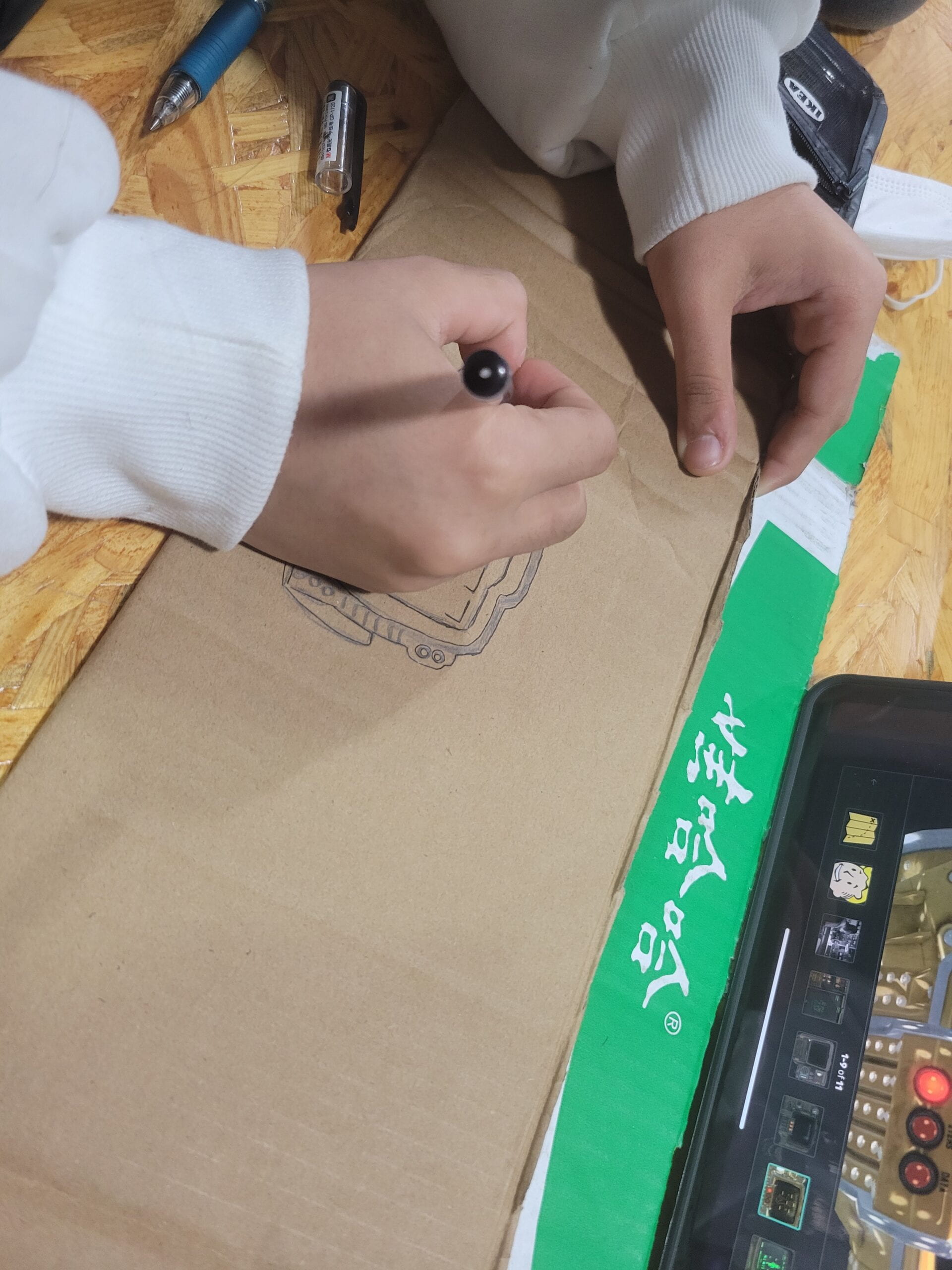
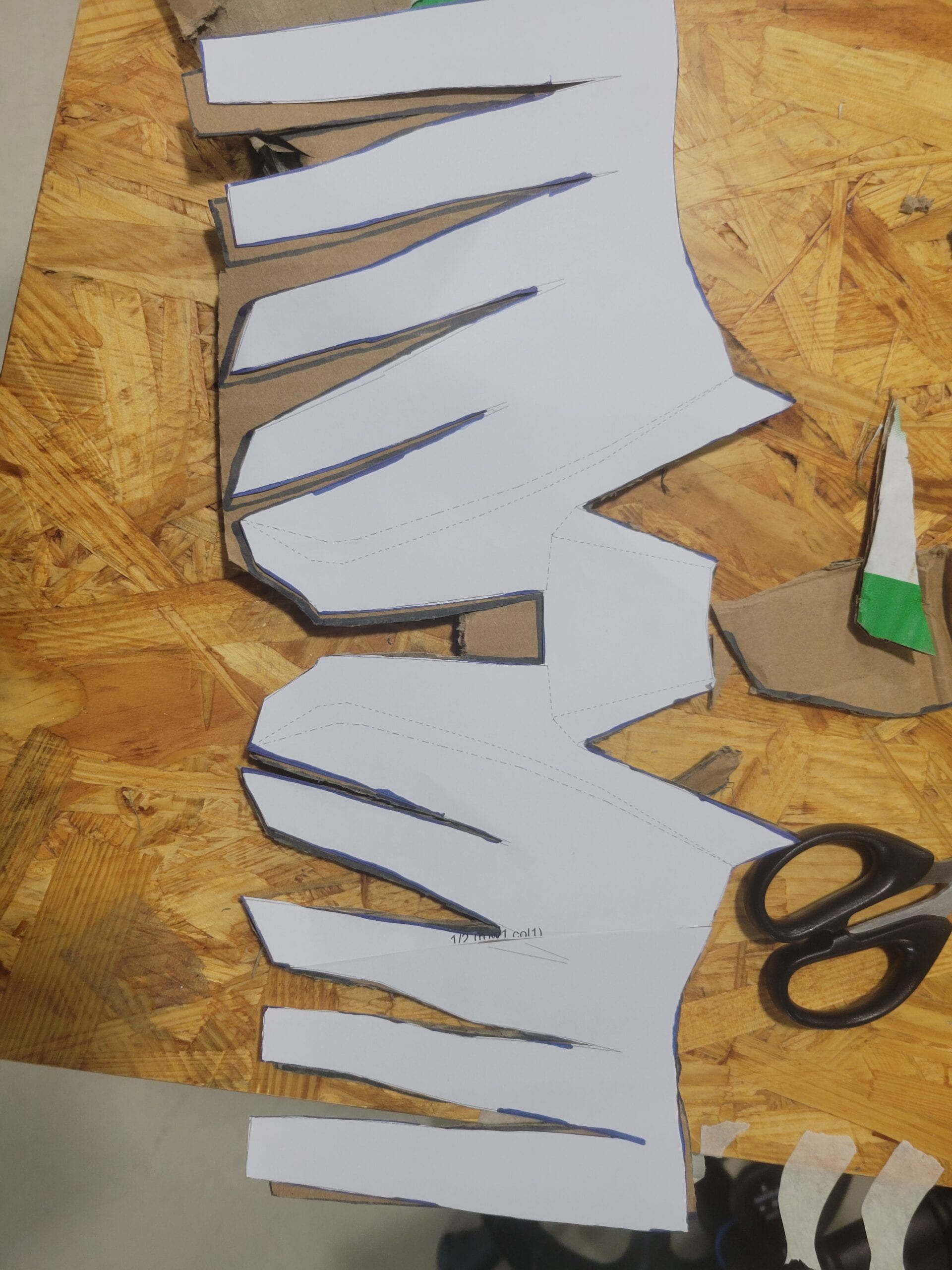
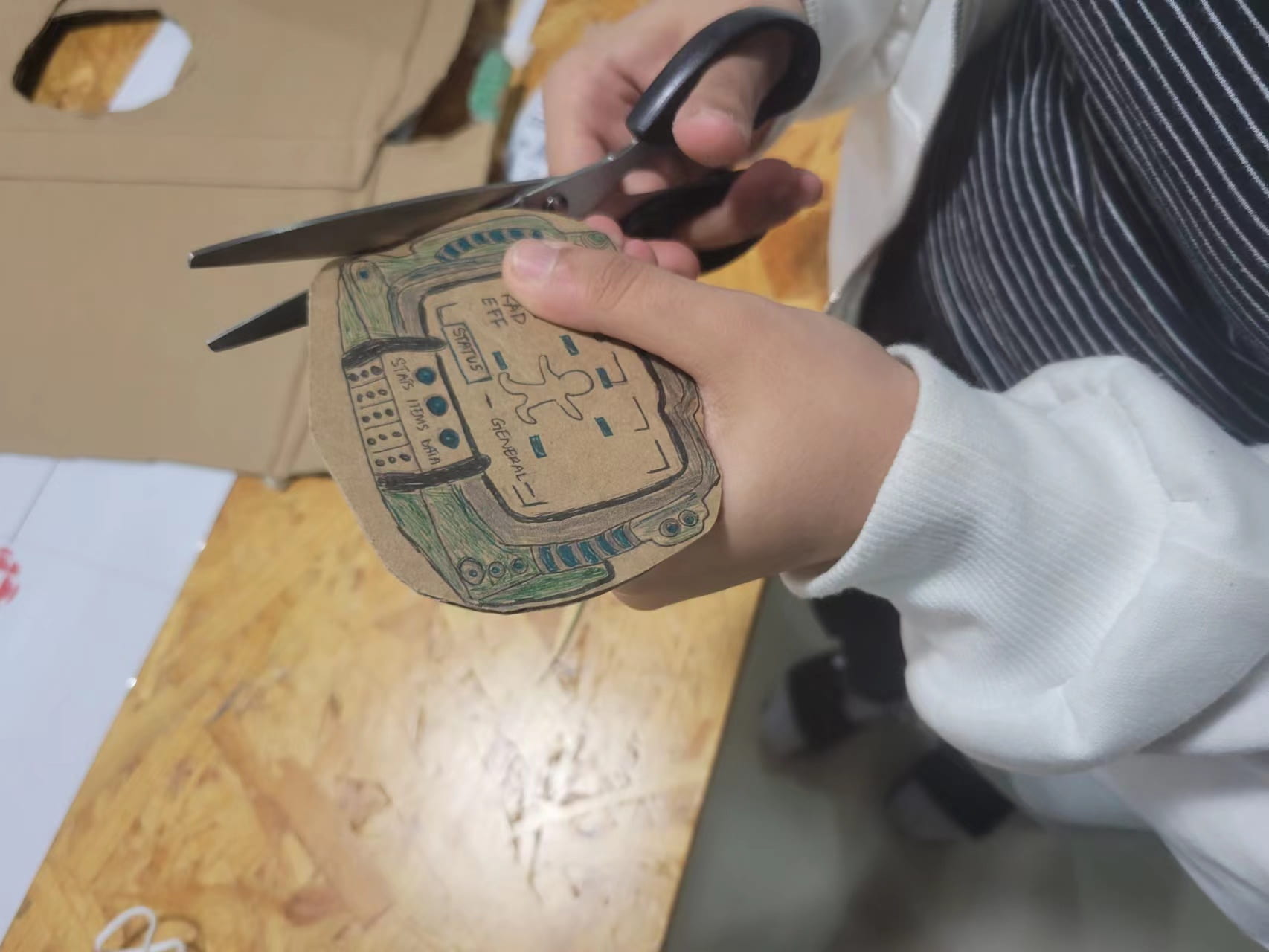

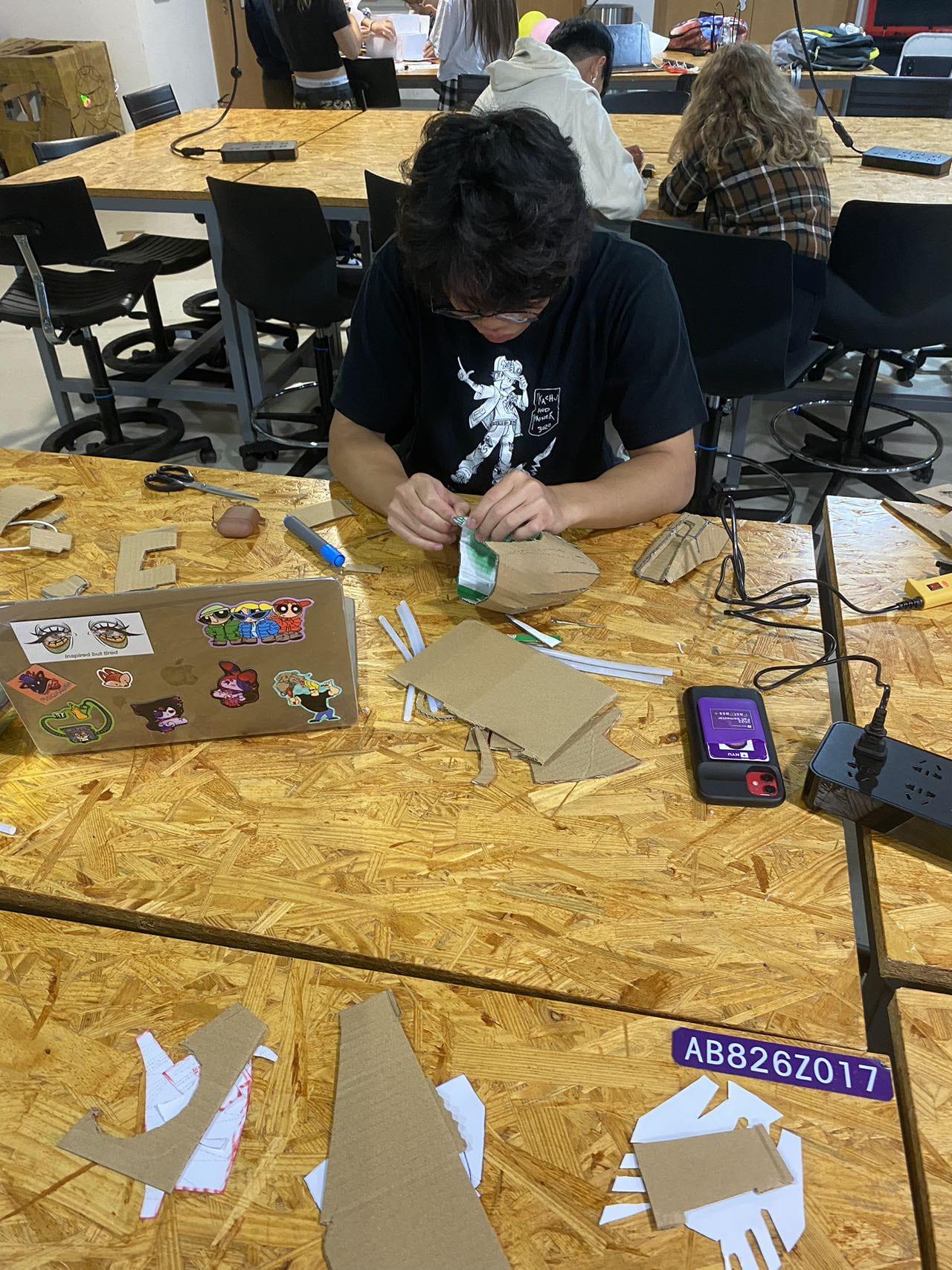
The finished product was pretty much what we had in our heads, it contains an upper part that could move upwards and downwards. One thing to note is that the linkages were delicate so we had to be extra careful when putting on and off the device; it was actually broken during our first rehearsal and we tried several ways to reinforce the structure successfully.
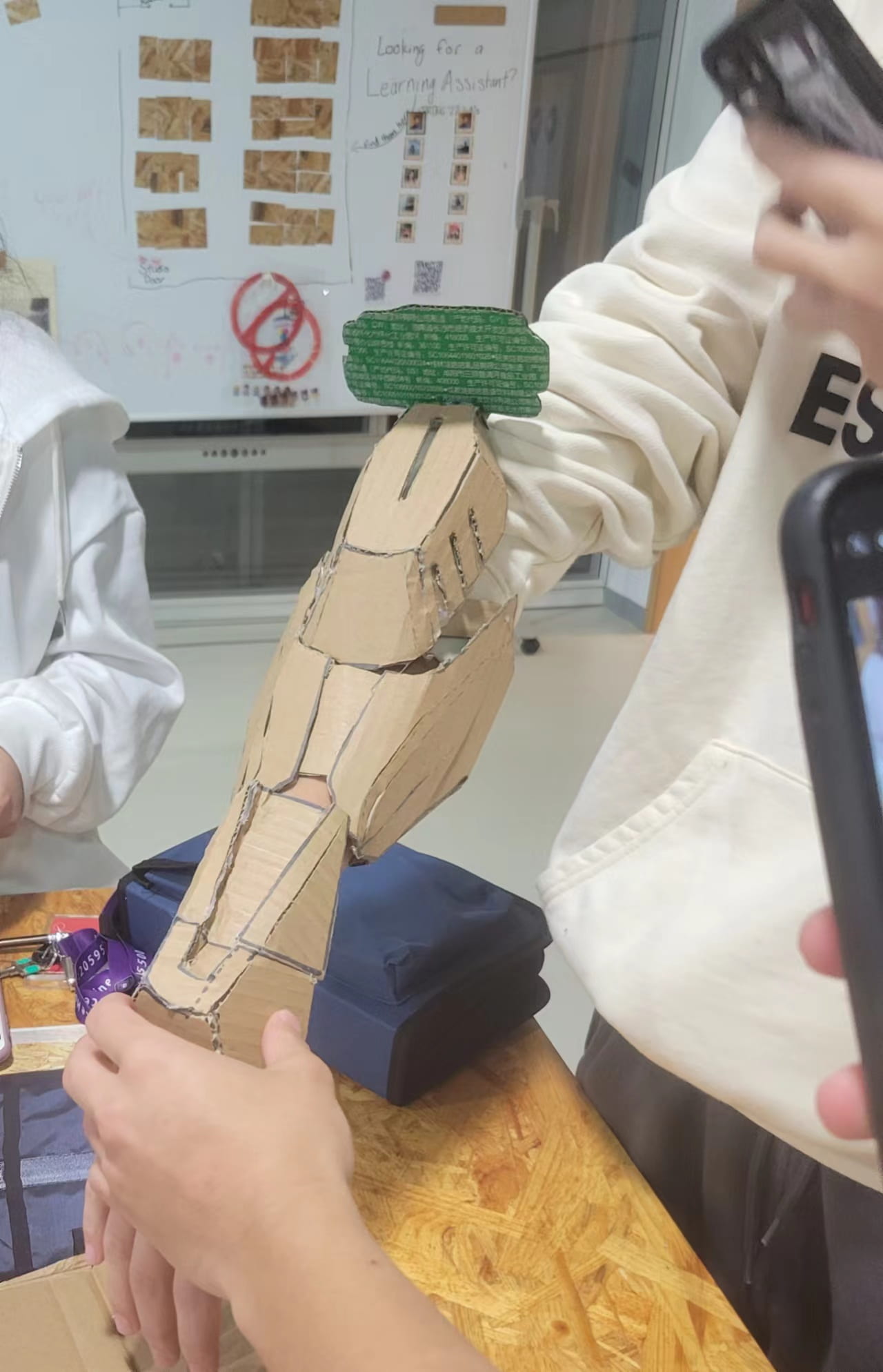
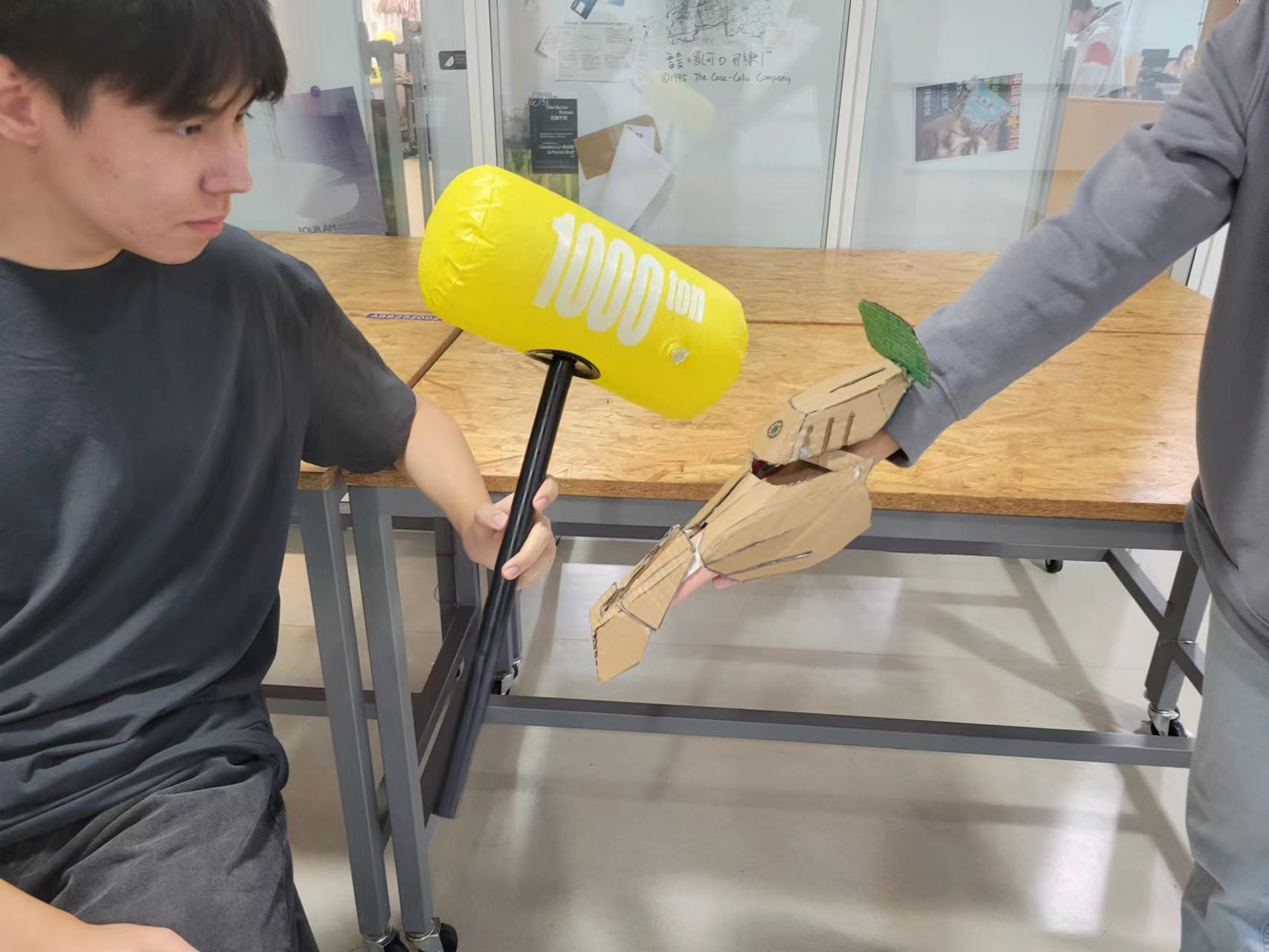
Script:
Roles:
Narrator: Jason/Morgan
2 Crows: Maryam (with the sensor)
Frida (killer)
3 victims/participants : Jason (not-stoned) (best friend to Morgan)
Shake (stoned) (best friend to Morgan)
Morgan (half stoned) (best friend)
Narration 20s
Scene 1: The Decision 2 min
Scene 2: Fight or Flight 40s
Scene 3:
Ending: Ask 2-3 members of the audience if they want to partake in the game
Take videos
Interactive
Roles:
Narrator: Jason/Morgan
2 Crows: Maryam (with the sensor)
Frida (killer)
3 victims/participants : Jason (not-stoned) (best friend to Morgan)
Shake (stoned) (best friend to Morgan)
Morgan (half stoned) (best friend)
Mock Script
Narrator: In this apocalyptic world, there is a deadly virus that infects people through bodily contact. Once affected, the victims turns into stone at various rates. To prevent further outbreak, all citizens will be subjected and forced to oblige to random health checks at all times.
Jason runs into the circle, and begins as the first patient getting tested
Shake stands in the middle, being the stoned
Morgan will stand at the opposite end, being half-stoned
Crows: YOU THREE, stop right now! You are now subjected to a random mandatory health check from the government.
Crow full scans Jason, and says he’s good
Crow full scans Shake, and beeps for discrepancy! Shake will drop to his knees, and “die”
Now, crow will scan Morgan, who is half stoned, and he runs away
*running motion from morgan* *he gets caught*
Morgan: No! Please don’t kill me! I have family at home, and my TWO friends who are with me!
Jason and Shake runs up, now they are his friends
Jason and Shake: No! Don’t kill Morgan! He’s such a good friend, husband, ….
*Killer Crow will hesitate, and ask the audience: Should I kill him? *
*Audience speaks*
Sensor Crow: For the sake of our society and our job, just kill him!
Killer Crow: *hesitates*, FINE. *hits and kills morgan*
*scene 1 is over, narrator runs back to the whiteboard to prepare the second scene*
Narrator: With Morgan being killed, the two friends of his are angry. As a result, they seek to take revenge. But, how would they do that without a weapon?
SCENE TWO DIFFERENT CHARACTERS
*Scene Two Starts*
*Morgan is now a dead crow, who lays on the ground with the sensor*
Shake: Hey, this is our perfect chance to get revenge! Let’s snatch this right off of him.
Jason: Are you sure? I’m also mad, but this isn’t the greatest idea, we could end up like Morgan . . .
Shake: Of course! Hurry up, take the sensor off of him
*Jason takes the sensor off of Morgan and wears it for himself*
*Then, the two other crows will appear . . . they are off-duty without sensors
*Suddenly, Shake comes from the back and hits both of them onto the ground*
Crows: What do you want?? (scared and panick) What you’re doing is illegal!
Shake: I don’t care! You murdered my best friend.
Crows: It was for the sake of the world
Jason: Audience, do I kill the crows who murdered my best friend, or keep them alive?
*depending on the audiences response*
You know what, I will not be like you . . . Killing you will not bring Morgan back, or any joy out of me. Stop this ridicious killing and find a cure to the virus!
Ideas?
Morgan – After five months of extensive research, a cure was finally found for the virus. Humanity lives, and the crows & civilans who worked together are given a Nobel Peace Price.
THE ENDING
Interactive: Ask 3-4 members in the audience if they would like to particpate. Scan them, and them randomly diagnose them with stoned/not stoned. It would be a random fun activity to do…
We had three meetings to rehearse the whole scene; the teamwork was really great, as we all found the most suitable parts for ourselves and enjoyed performing this hilarious scene.
On the presentation day, there was a group that created a piece that resembles a 3D Virtual Reality Headset connected with a pair of sensor gloves, which impressed me. One person would wear the headset, and he would descript what he saw, heard, and even felt in this imaginative virtual reality. It was based on the immersive laser projectors in The Veldt. The decoration of the headset was done carefully and artistically, and the way they imitated the real VR headset by adding human interactions (singing, touching, using different images) conveyed the idea of interaction, as well as people’s potential experience during this sort of interaction perfectly.
